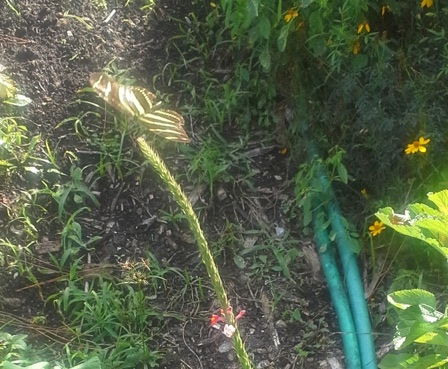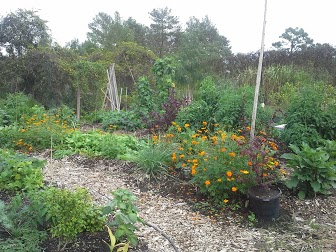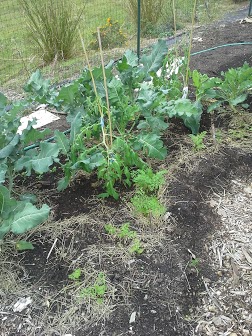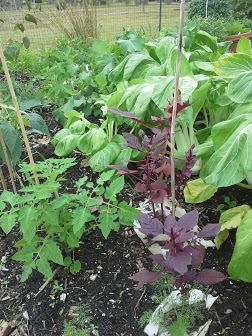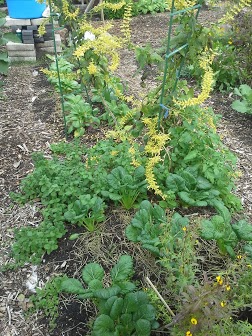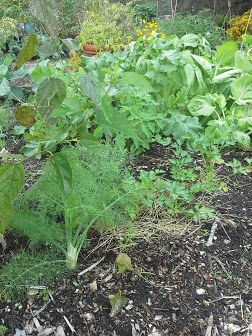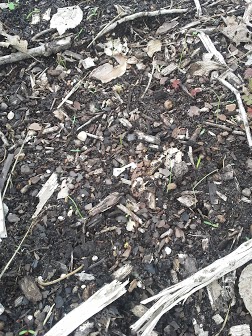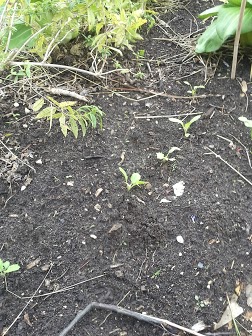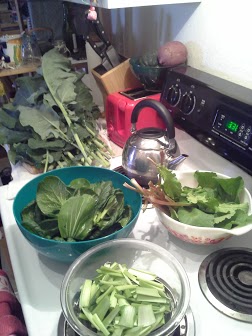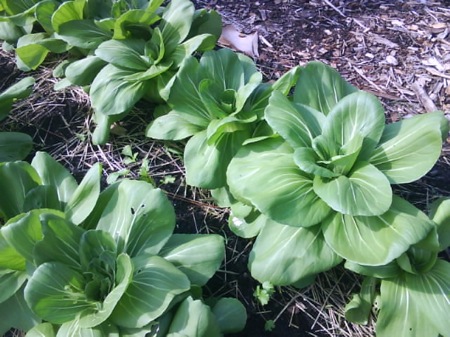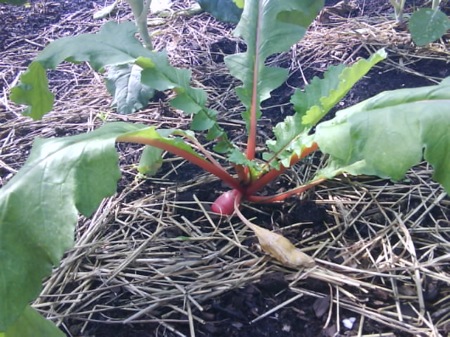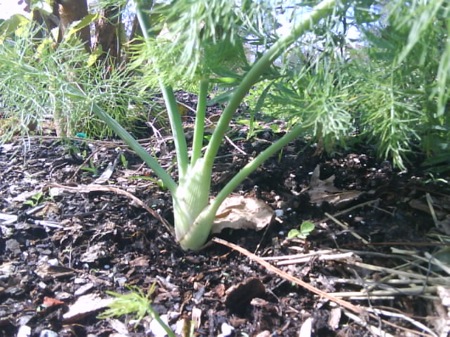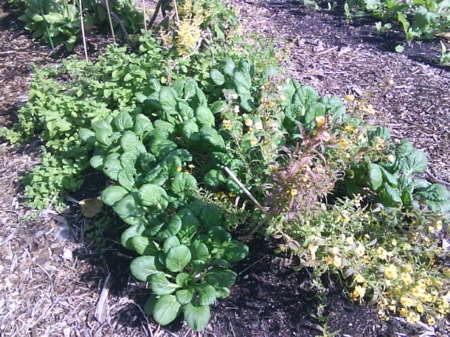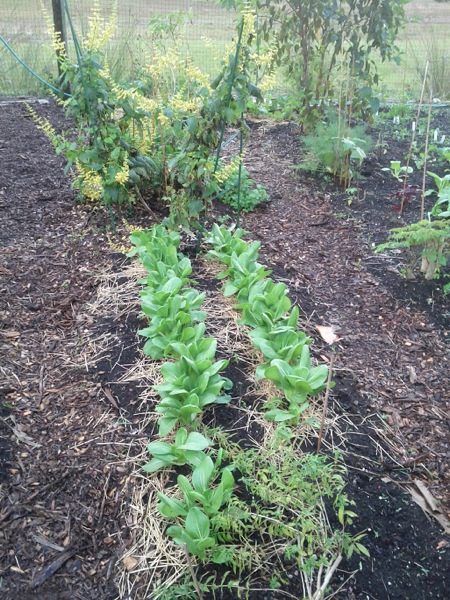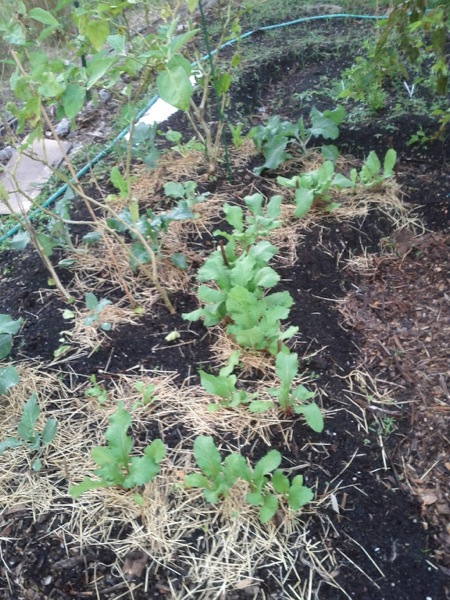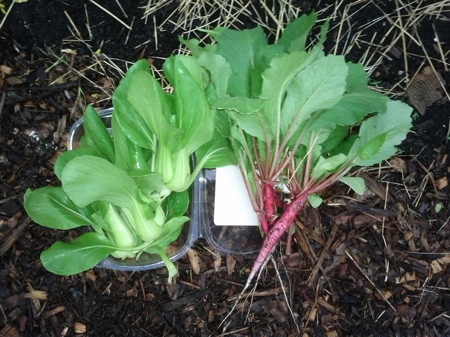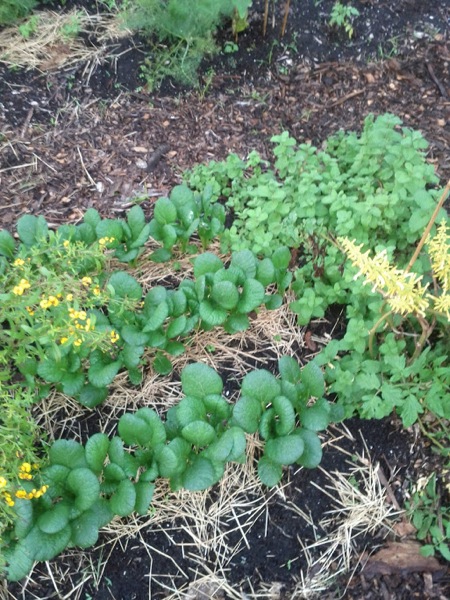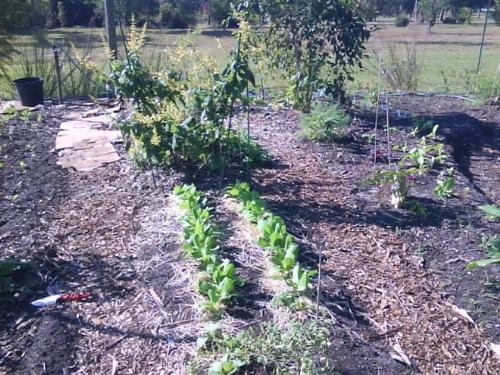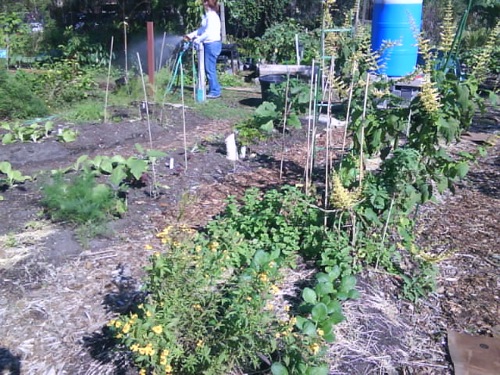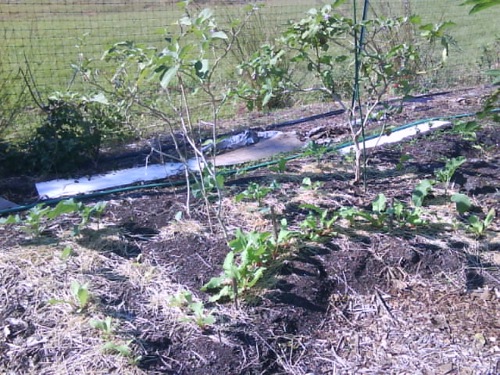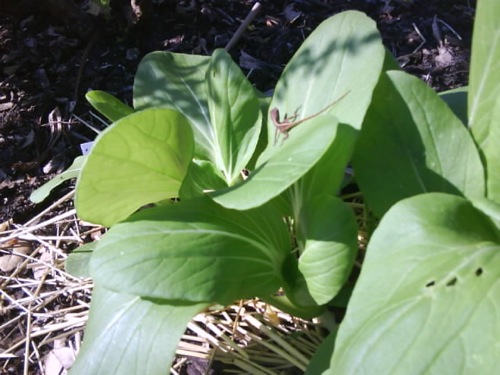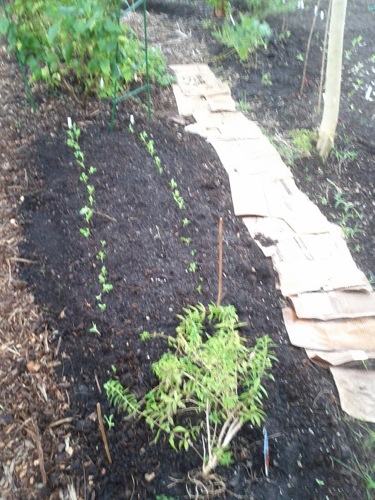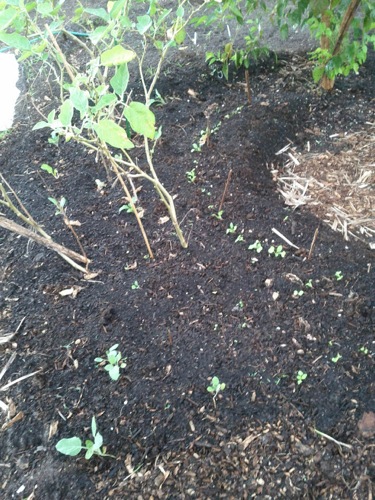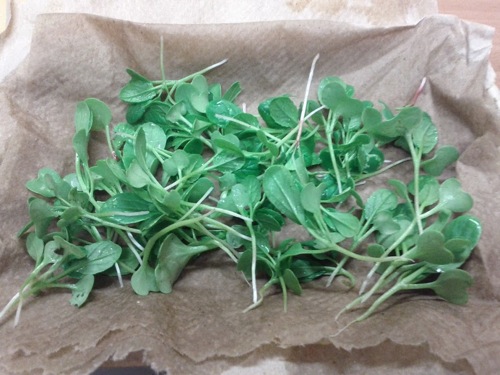We just returned from vacation (hence the posting silence), and weren’t sure what the condition of our garden would be. Since our plot is in a community garden, it was watered while we were gone, and we asked some of the other volunteers to feel free to harvest things- mainly the pak choy, collards, and misome.
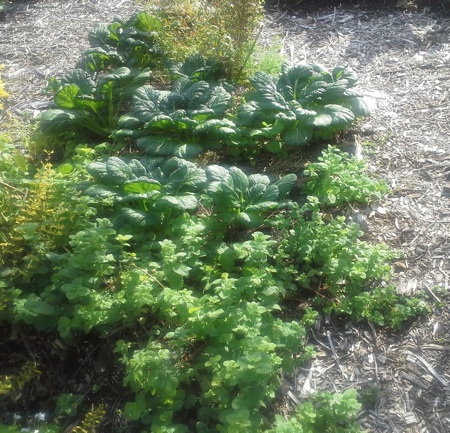
It looks like they did harvest at least the first two, though maybe the misome is unfamiliar enough that people weren’t sure what it was and whether to take it. The pak choy is pretty much gone (except for 3 plants that are going to seed). But the collards and misome are still going strong.
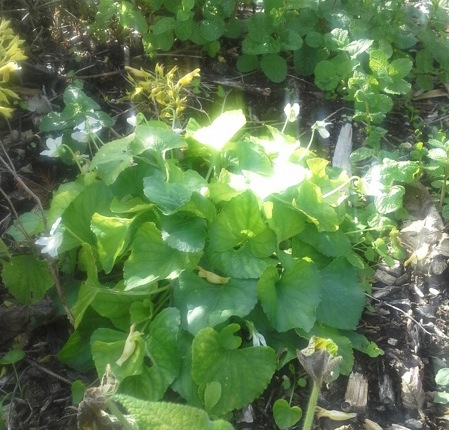
A few weeks before we left, I planted some seeds, so now the turnips, onions, and radishes are coming up. The onions haven’t gotten much bigger (they’re under the mulberry tree), but the other two are growing nicely.
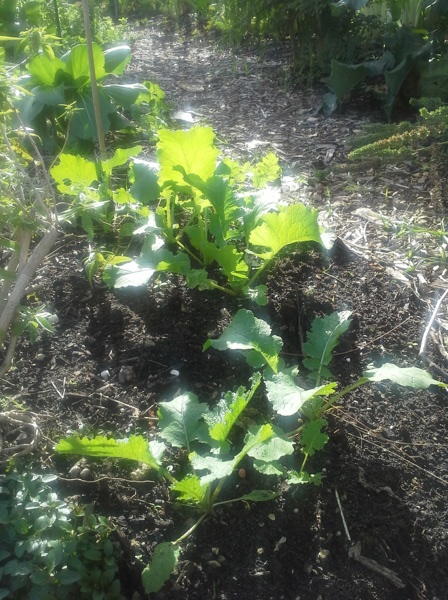
The collards are overshadowing the new radishes, so we have some competition for photons. Of course, that’s easily managed by harvesting some more greens (which we did).
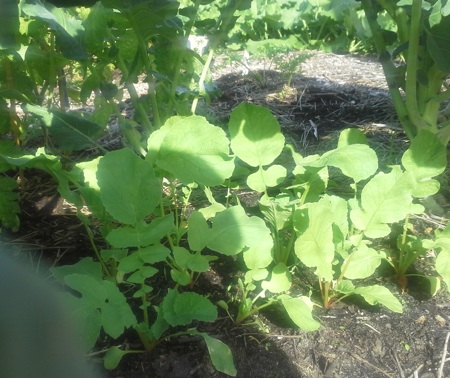
It didn’t quite get down to freezing while we were gone, though it probably got very close to that. At any rate, the basil, green peppers, tomatoes, and amaranth are not doing well. The tomatoes may survive at the bases, but the basil and peppers are smaller, and unlikely to last the winter. It’ll probably briefly freeze a few times over the next few months.
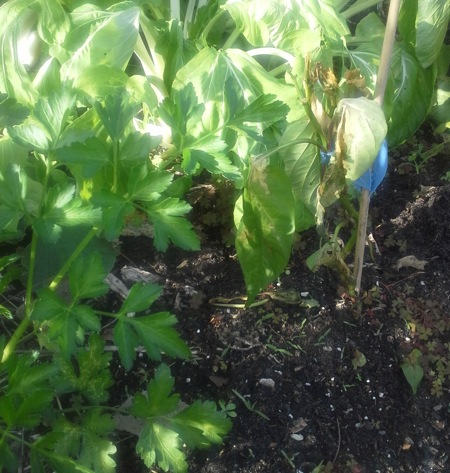
The cool weather seems to have fooled a few things into thinking it’s spring. Our violet is blooming, and so is a cherry (or plum?) tree in the corner of the garden. The tarragon has finally stopped, and I gathered a bunch of seeds from it. Now sure how many I’ll actually plant, but I can always give them away.
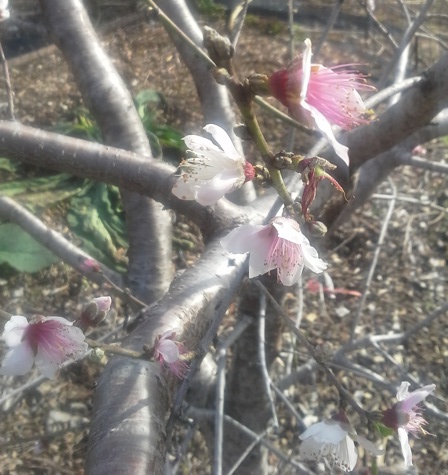
There’s lots of dill and cilantro coming up, as “volunteers.” I guess they like the cooler weather. The mulberry tree is also fruiting like crazy, and I’m surprised no birds are going for it yet. I did see a Carolina wren and palm warbler hanging around today, and heard some cardinals lurking in the bushes. There are also a bunch of robins around. Also, butterflies!
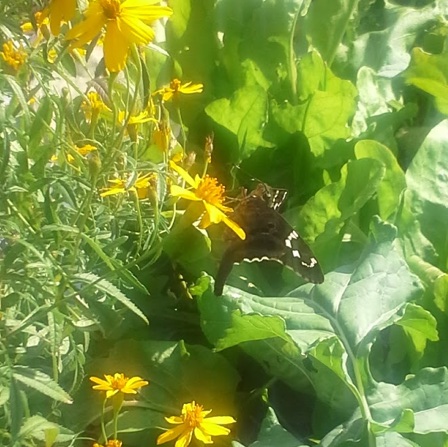
It’s definitely nice to see insects flying around in the winter- at least beneficial ones like these. I have to say the fire ants were still a nuisance- I was bitten a few times, but seemingly less venomously than usual. Maybe they’re lazy with the cooler weather. Though I still think of them as malevolent critters.
